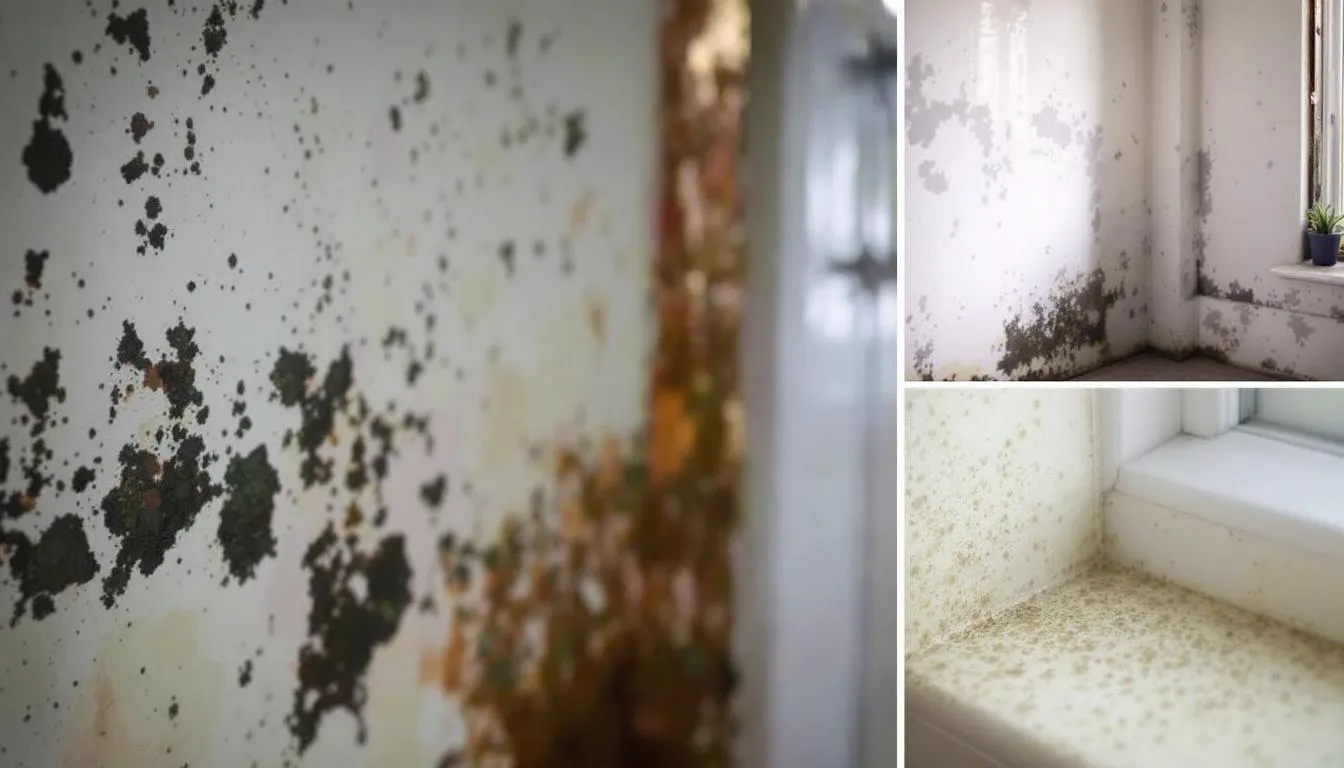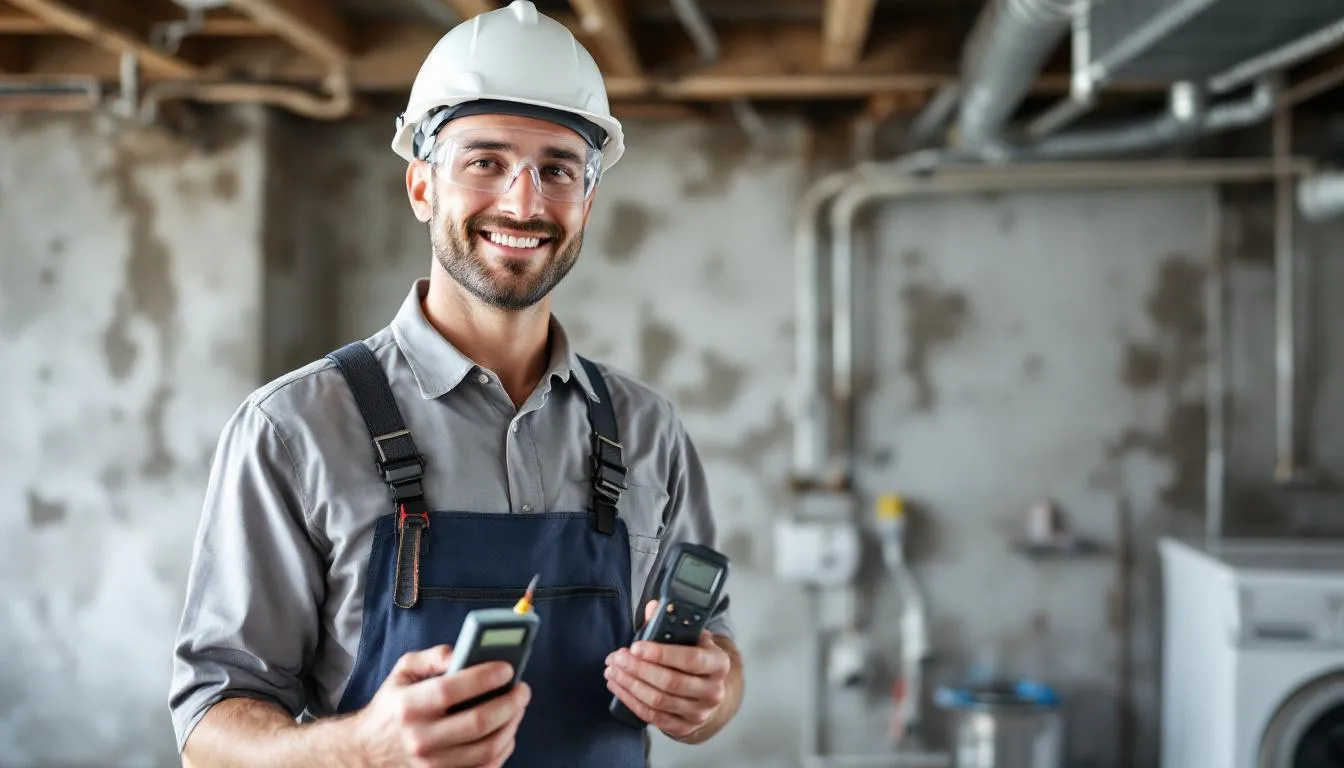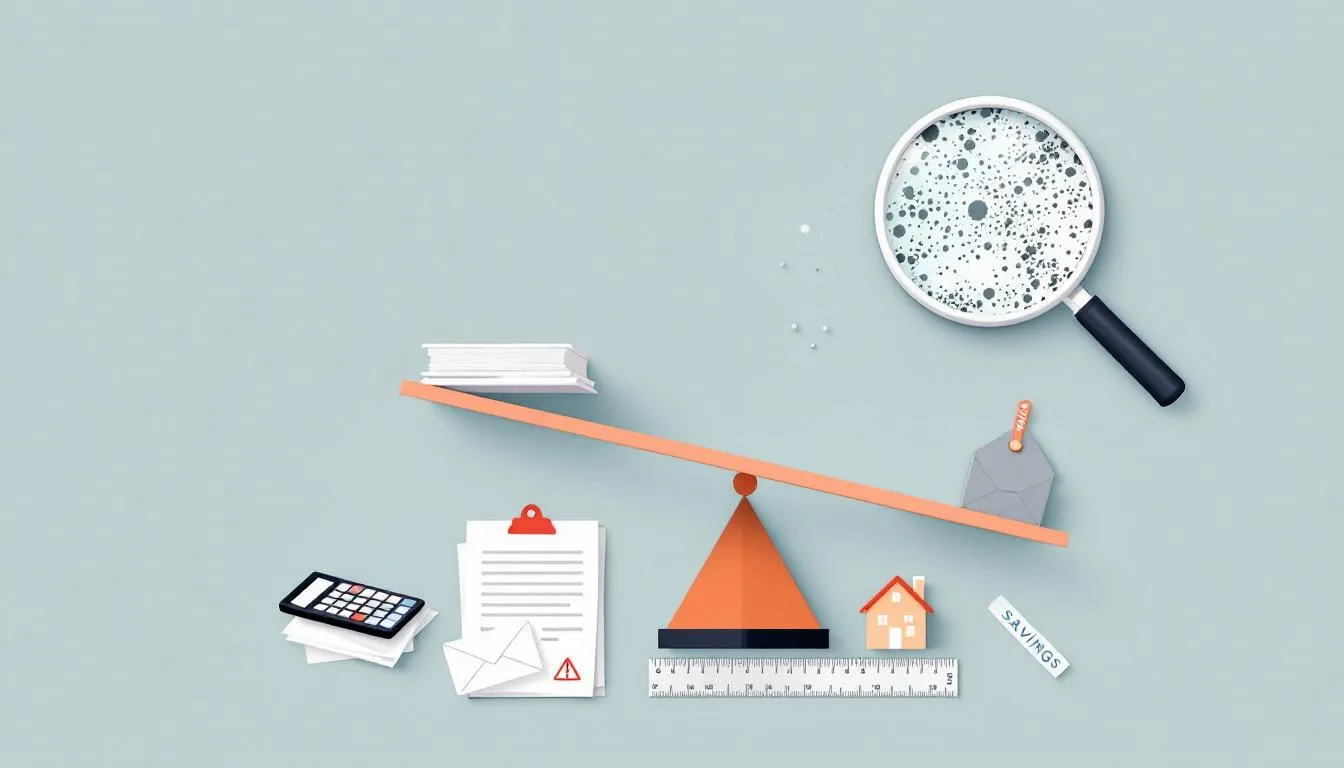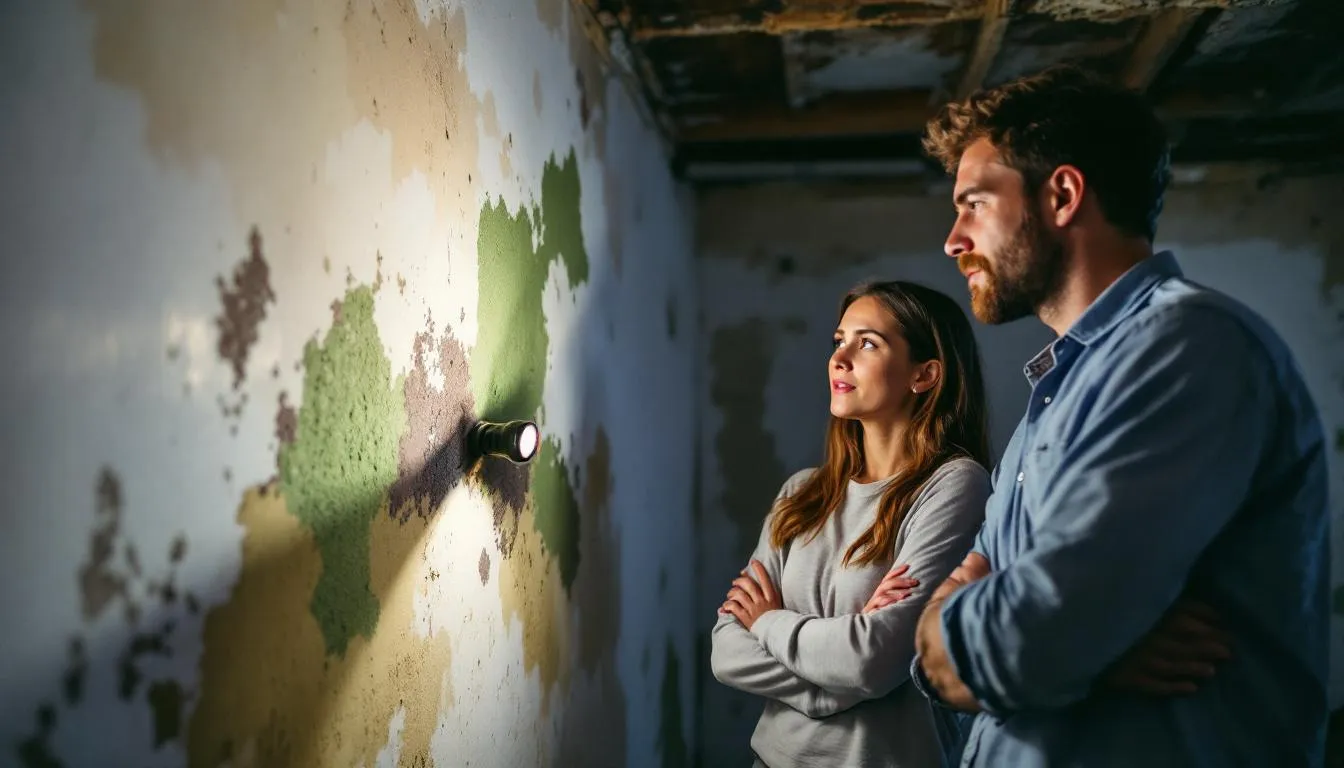Thinking about whether you should get a mold inspection when buying a house? It’s a good idea. Mold can hide in places a general inspection might miss, posing health and structural risks. In this article, we’ll cover why “should I get a mold inspection when buying a house” matters, their differences from general inspections, where mold usually grows, how to spot it, and the benefits of hiring professionals.
Table of Contents
Toggle- Key Takeaways
- Importance of Mold Inspections in Home Buying
- Mold Inspection vs. General Home Inspection
- Common Places to Find Mold in Homes
- How to Identify Mold Problems
- Benefits of Professional Mold Inspections
- What Happens During a Mold Inspection?
- Addressing Mold Issues Before Closing
- Legal Requirements and Seller Disclosures
- The Cost of Mold Inspections and Potential Savings
- Should You Buy a House With Mold?
- Summary
- Frequently Asked Questions
Key Takeaways
Mold inspections are essential for identifying health hazards and maintaining the structural integrity of a home before purchase.
Professional mold inspections offer detailed analyses that go beyond general home inspections, ensuring thorough assessments of mold presence and risks.
Homebuyers should be aware of legal requirements regarding mold disclosure from sellers to protect themselves from potential liabilities.
Importance of Mold Inspections in Home Buying

Mold inspections are crucial for ensuring a safe living environment by identifying potential health hazards before purchasing a home. Certain molds, including black mold, can pose severe health risks, particularly to sensitive individuals, leading to respiratory problems and severe allergic reactions. Improving air quality through mold inspections is essential for protecting your family’s health, as hidden mold issues can compromise well-being and trigger conditions such as asthma and allergies.
Aside from health concerns, mold can weaken building materials, posing a risk to the structural integrity of a home, which may lead to costly repairs. Timely mold assessments can help prevent significant damage to the property, protecting its structural integrity. Identifying mold early can prevent costly repairs and help protect the home’s value, mitigating future financial liabilities.
Mold inspections safeguard finances and provide peace of mind by ensuring the property is free from harmful contaminants. A mold inspection can help you avoid unexpected expenses and ensure your new home is safe and healthy for your family.
Mold Inspection vs. General Home Inspection
A general home inspection and a mold inspection serve different purposes:
A home inspector may notice signs of mold or water damage during a general inspection, but does not perform the specialized assessment that a mold inspection provides.
A home inspection does not specifically check for mold.
A mold inspection is focused solely on identifying mold and its sources.
Home inspections may include visual checks for mold.
Home inspections do not provide the detailed analysis related to mold types and concentrations that a mold inspection would.
Mold inspectors utilize specialized equipment and procedures to detect and assess mold, including:
Using moisture meters and thermal cameras to detect hidden mold
Conducting air and surface sampling to accurately assess mold presence and levels
Performing an outdoor assessment to establish a baseline of natural mold levels for comparison with indoor samples
This thorough mold inspection goes beyond what a general home inspection offers, ensuring a comprehensive evaluation of mold issues.
Mold inspection reports deliver a detailed analysis of mold types present and the associated health risks, which are beyond the scope of general home inspection reports. Understanding the differences between these two types of inspections ensures your home is evaluated thoroughly, providing peace of mind. An inspection report can help clarify these distinctions.
Common Places to Find Mold in Homes

Mold can be found in various parts of a home, often thriving in areas with poor ventilation and moisture accumulation. Common places where mold develops include:
Attics
Basements
Garages
Bathrooms, particularly around sinks, toilets, and shower areas, due to their warm and humid environments.
Crawl spaces
Kitchens are another hotspot for mold, especially around:
sinks
refrigerators
microwaves where moisture tends to collect. Mold can also be found in hidden areas like:
inside walls
ceiling tiles
behind appliances. These concealed areas, often referred to as dark corners, harbor mold that is not immediately visible, making thorough mold inspections crucial.
It is important to inspect various surfaces, such as walls, floors, and ceilings, since mold can grow behind or within these surfaces and remain hidden from view.
Damp or musty odors can signal the presence of mold, indicating that further investigation may be necessary. Awareness of common mold hiding spots helps homeowners and inspectors focus on critical areas for a comprehensive evaluation.
How to Identify Mold Problems
Identifying mold problems early can save homeowners from significant health and financial issues. Common obvious signs of mold issues include:
Musty smells
Visible discoloration
Past water damage Visible mold growth is a clear indicator of a mold issue and does not typically require additional sampling.
A moisture meter can locate wet areas that may harbor mold. Look out for standing water, water stains on walls, and high humidity as signs of mold problems and excess moisture. These indicators can help you detect mold early and take appropriate action regarding water penetration.
Remember, mold thrives in moist environments. Mold is a visible form of fungi, which can cause both structural damage to your home and health problems for its occupants. Addressing any moisture problems promptly can prevent mold growth and protect your home from further damage caused by fungus. Additionally, it is important to remove mold to ensure a healthy living environment.
Benefits of Professional Mold Inspections

Hiring professional mold inspectors offers numerous advantages. These experts use various techniques, including air testing and wall sampling, to provide thorough assessments. Their expertise instills confidence in findings and helps home buyers make informed decisions. Qualified environmental protection agency professionals utilize specialized tools such as air-sampling devices, infrared cameras, and digital hygrometers for advanced detection, including mold tests. It is advisable to have your home professionally inspected.
Professional inspectors can also check HVAC systems for hidden mold growth, as these systems can harbor mold spores and contribute to indoor mold problems.
Unlike DIY testing kits, professional inspectors have the accuracy and experience necessary for effective mold detection. Professional mold testing offers more reliable assessments than DIY methods, giving an accurate analysis of mold presence and type. The process includes:
Sending samples to accredited laboratories for analysis
Ensuring precise results regarding mold contamination.
Professional mold inspections can reveal hidden mold that may be missed by untrained individuals, ensuring comprehensive treatment. A thorough approach protects your investment and health by effectively addressing mold issues.
What Happens During a Mold Inspection?
A mold inspection involves a comprehensive investigation that can take anywhere from two to six hours based on complexity. The inspector will conduct a thorough walk-through to identify visible signs of mold and moisture problems. To ensure a thorough assessment, it is essential to get a mold inspection and consider getting a mold inspection to identify moisture sources that foster mold growth, which is a critical part of the initial assessment.
Inspectors utilize tools like moisture meters and air sampling devices during the visual inspection process. Professional inspectors use advanced equipment such as thermal imaging to ensure comprehensive detection of mold. Air sampling and surface sampling are conducted to test for mold, with lab results typically available within a few days.
Mold inspections can prevent significant structural damage by identifying mold early, leading to timely interventions. Knowing what happens during a mold inspection helps homeowners prepare and ensures a smooth process.
Addressing Mold Issues Before Closing
Mold inspection results can be leveraged to negotiate price or request repairs with the seller, giving buyers an advantage. If mold is found, buyers can negotiate with the seller or ask for remediation plans.
Mold inspections help homeowners devise effective remediation plans, with inspectors providing guidance or referrals to specialists. Materials like carpeting, subfloors, or walls may need replacement during mold remediation.
Steps to fix mold problems include removing mold and damaged structures and addressing the moisture source. It is important to check for improperly installed systems, such as plumbing or insulation, as these can allow water intrusion and lead to mold growth. If mold has been present for a long time, hiring a professional contractor for serious work is necessary. Addressing mold issues can be expensive due to the need to repair leaking pipes and plumbing issues. Ensuring these issues are addressed before closing can save future homeowners from significant headaches and expenses.
Legal Requirements and Seller Disclosures
Sellers are often obligated to disclose mold issues, and failure to do so can lead to legal repercussions. Most states require sellers to inform potential buyers about existing mold problems or conditions that could lead to mold growth. Real estate agents must provide a disclosure statement outlining any known property defects, including mold.
Failing to disclose mold issues can result in lawsuits and significant financial liabilities for sellers. The responsibility for mold removal often falls on the seller to disclose its presence but can vary by state regarding who bears the remediation cost. For disclosure of any mold or water-related problems, buyers should actively ask the seller during the home buying process.
Homebuyers should obtain complete disclosure from sellers about any known mold issues. Key points include:
Sellers are usually not obligated to conduct mold testing before selling.
Sellers must disclose known mold if it exists.
Some states require sellers to disclose active mold growth to potential buyers. Being aware of these legal requirements can help buyers protect themselves and ensure transparency in the transaction.
The Cost of Mold Inspections and Potential Savings

Mold inspection and remediation costs can vary based on several factors:
Mold inspections usually cost a few hundred to a few thousands of dollars, depending on house size.
Air testing adds several hundred dollars to the inspection costs.
Mold remediation costs vary significantly based on the location and severity of the mold.
Professional mold remediation typically ranges from $1,500 to $9,000, depending on the severity of the problem.
Skipping a mold inspection may result in unexpected costs due to pre-existing mold issues. Mold inspections identify issues early, allowing for budgeting for remediation or negotiation of necessary repairs. Early detection of a mold problem can prevent more expensive remediation later and save substantial costs by stopping extensive infestations.
Conducting inspections before selling a property can help maintain its value by addressing potential mold issues. Mold inspections offer several benefits:
Improve insulation and indoor air quality by detecting airborne mold spores
Potentially reduce health-related expenses
Provide expert advice on preventing future mold problems, saving money in the long term
Should You Buy a House With Mold?

If mold is present, homebuyers may receive a credit at closing to cover remediation costs instead of the seller performing the work. Mold inspections can save homeowners from significant repair costs due to hidden mold damage. Investing in a mold inspection can help avoid potential health-related expenses caused by mold exposure.
The presence of mold can lead to a significant drop in property value, especially if extensive remediation is required. If mold is discovered post-sale, buyers may seek damages for remediation costs and potentially rescind the sale. Mold can be visually unappealing and may cause persistent stains that are hard to eliminate.
Signs that it’s time to reconsider buying a house with mold include significant inspection failures and sellers unwilling to address mold issues. It’s also important to check for a leaky roof, as it can be a major source of moisture and mold growth. Addressing mold problems before finalizing the dream home purchase can prevent future headaches and financial strain.
Summary
In summary, mold inspections are a vital part of the home-buying process, providing insights into potential health and financial risks. By understanding the importance of mold inspections, differentiating them from general home inspections, and knowing where mold commonly hides, you can make informed decisions that protect your investment and health.
Prioritizing professional mold inspections and addressing mold issues before closing can save you from costly repairs and ensure a safe living environment. Remember, a thorough mold inspection is an investment in your future, offering peace of mind and safeguarding your new home.
Frequently Asked Questions
Why is a mold inspection important when buying a house?
A mold inspection is crucial when buying a house because it identifies potential health hazards and structural issues, ensuring a safe living environment and protecting your investment.
How is a mold inspection different from a general home inspection?
A mold inspection specifically targets mold detection and its sources with specialized tools, whereas a general home inspection evaluates the overall condition of the property. Understanding this distinction is crucial for addressing specific mold-related concerns effectively.
What are common signs of mold problems in a house?
Common signs of mold problems in a house include musty odors, visible discoloration, signs of past water damage, and elevated humidity levels. Addressing these issues promptly can help prevent further mold growth.
What happens during a professional mold inspection?
During a professional mold inspection, experts conduct a detailed walk-through to identify visible mold and moisture issues, followed by air and surface sampling with specialized equipment for lab analysis. This comprehensive approach ensures accurate detection and assessment of mold presence.
Should I buy a house with mold?
Buying a house with mold is advisable only if the extent of the problem can be effectively assessed and remediated. Conducting thorough mold inspections is essential to negotiate necessary repairs or make an informed decision about the purchase.

